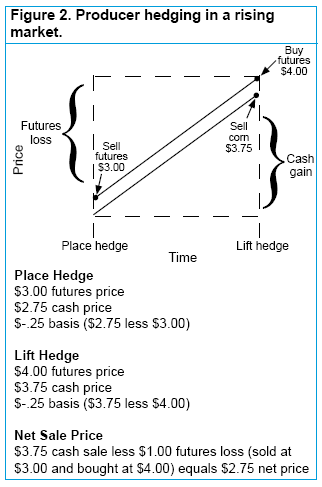Hedging For Dummies
Post on: 12 Июнь, 2015 No Comment

Want to protect against rising gas costs or falling house prices? Good luck.
Life is beset with financial hazards. Your new SUV becomes uneconomic when gasoline shoots to $4. The housing bubble collapses just when youre in the middle of a relocation and carrying two houses. A jump in the euro makes your summer vacation unaffordable.
Big corporations hedge away financial risks in the futures market on the Chicago Mercantile Exchange, among other trading venues. Whats the little investor supposed to do? John Nafeh has an answer: Buy Hedgelets.
Nafeh, 63, in late 2004 launched HedgeStreet, a vehicle for making tradable microbets on the prices of things like homes, gold, foreign currencies and oil. And we do mean micro: Most Hedgelets are worth a maximum of $10. Youd need to buy a lot of them in order to insure yourself against typical annualized household risks.
HedgeStreet bills its contracts as small, inexpensive, easy-to-understand and says they open markets never before accessible to individual traders. The firms Web site invokes Charles Schwab s revolutionary discount-brokerage idea, and it has a plug from famed economist Robert Shiller: HedgeStreets products are the next generation of instruments that address economic risks faced by people every day. HedgeStreet is regulated by the Commodity Futures Trading Commission. There is no trading floor; all trading is online.
A nice idea in principle, but it remains to be seen whether HedgeStreet will enable ordinary folk to sleep better. Indeed, the pathetic trading volume, gaping bid/ask spreads and ridiculously short contract maturities (rarely stretching beyond 7 days) are enough to make any intelligent investors hair curl. HedgeStreet admits its site right now is best for speculators, but its hedging viability will improve with liquidity.
Nafeh, who has a doctorate in decision and risk analysis from Stanford, opened the hedge trading business in San Mateo, Calif. with an undisclosed amount from a venture capital firm he runs, plus other support he wont identify. Trading volume last year was all of 1 million contracts, worth $5 million. By way of contrast, the Chicago Merc does $3 trillion in one day of trading.
The classic commodity option is a contract that gives the buyer the right, but not the obligation, to buy or sell something at a particular price. A $68 June call on oil is worth one dollar for every dollar that oil in June lands above $68, times the number of barrels involved. Nafehs main product is something quite different–namely, a binary option that pays either $10 or nothing. The idea is to make hedging simpler and more affordable for the little guy. No question, Hedgelets are affordable if you measure that property only by contract size. The smallest oil option on the New York Mercantile Exchange (a.k.a. the Nymex) is for 1,000 barrels, and a $59 March call expiring Feb. 15 was trading on Feb. 14 for $820.
The simplicity of HedgeStreets offerings is more debatable. Their unconventional nature makes it hard to compare binary options with regular commodity contracts. Take a $59 oil Hedgelet maturing Feb. 15 (the latest available on Feb. 14). Buy it and you collect $10 if oils ending price is above $59 but nothing if the price ends at or below $59. Take the other side of the bet and you collect $10 if the price ends below $59.
Say it will cost you $8 to buy the bullish bet. A seller puts down $2 for the bearish bet. Now, making a comparison to a mainstream commodity option requires a little work on the back of an envelope. Roughly speaking, the simultaneous purchase of 50 bullish $59 Hedgelets and 50 bullish $60 Hedgelets would have the same payoff as buying one $59 Nymex call and selling one $60 Nymex call. (With either pair of trades you get no payout if oil ends below $59, $1,000 if oil ends above $60 and something between $0 and $1,000 if oil ends in between.) As of Feb. 14 the two Hedgelet trades would have cost you $600 at asked prices. The Nymex strategy would have cost you $510.
All these prices are before fees. To trade on Nymex, broker fees run about $20 a turn, so our hypothetical buyer would pay between $40 and $80 in broker fees. From each bull/bear pair of binary Hedgelets, HedgeStreet collects 30 cents in closeout fees plus a minimum of 10 cents in trading fees. Our hypothetical buyer of 100 Hedgelets would pay between $5 and $35 in fees.
It appears that Hedgelets will get the 60-40 tax treatment often accorded to futures and options: Gains and losses are considered 60% long term, 40% short term.

The main problem with Hedgelets is their miserable liquidity. So thin is trading that on some days many contracts trade as few as 20 Hedgelets or none at all. Bid/ask spreads get comically wide at times. One natural gas contract was recently quoted as $3.25 bid, $6.73 ask. Not that you would ever do anything so stupid, but what if you were to buy each side of this bet at the less favorable price? Youd pay $6.73 for the long side; on the short side youd pay the difference between $10 and $3.25. Youd spend a combined $13.48 for the right to collect $9.70 at maturity–a sure way to lose money.
You could, of course, place a limit order somewhere in the middle of the spread and hope that your trade is met by a speculator on the other side. And, assuming you can find someone willing to take a bet off your hands, you can exit before maturity. Nafeh wont say how many contracts never trade at all during their lifetimes for want of two players willing to meet at some price.
These $10 bets may have some appeal for speculators who want to shoot craps with their lunch money. They are, for the most part, not terribly practical for people concerned about big economic risks in their lives. The gasoline Hedgelets, for example, extend out only a week. Nafeh says he plans to introduce contracts that run for longer.
The real estate Hedgelets settle quarterly, letting a trader take a position on what the median single family home will cost in six markets: Chicago, Los Angeles, Miami, New York, San Diego and San Francisco. Presumably you could protect against a decline in a homes value by taking the short side in a few thousand Hedgelets–assuming you can find a counterparty. But with thin, flaky trading volume, how do you know if the Hedgelet price is anything close to fair value?
Heres our advice to people who want to protect against financial risks: Look for some heavily traded stock or stock option to buy. If heating oil or gasoline bills worry you, pick up $20,000 worth of shares in a big oil company and just sit on them. If a real estate collapse is on your mind, wait until April, when the Chicago Merc opens trading in futures keyed to a real estate index in ten cities; each future tracks approximately $50,000 worth of home value. Dont jump into Chicago Merc real estate until trading volume tops 500 contracts a day, there is increasing open interest to show its not just a few day traders and the bid/ask spread is no worse than 2% of contract value.
What if the Merc home price future never gets off the ground? As a crude (but at least fairly priced) approximation of the insurance you need, you could buy some put options on heavily traded home builder stocks. Yet another option is to do nothing. Better to incur a small risk that the real estate market will go against you than a large risk of getting hosed on bid/ask spreads.














